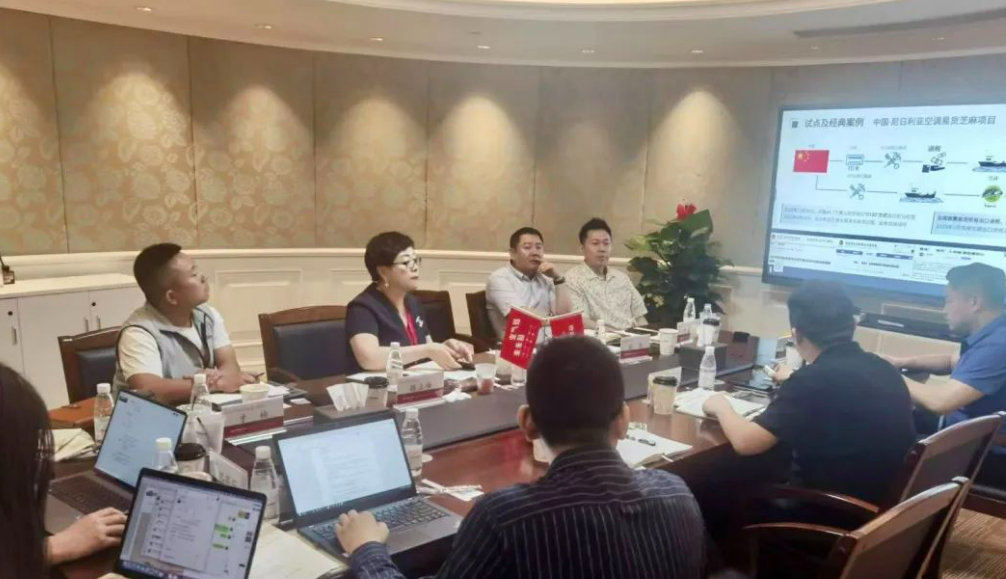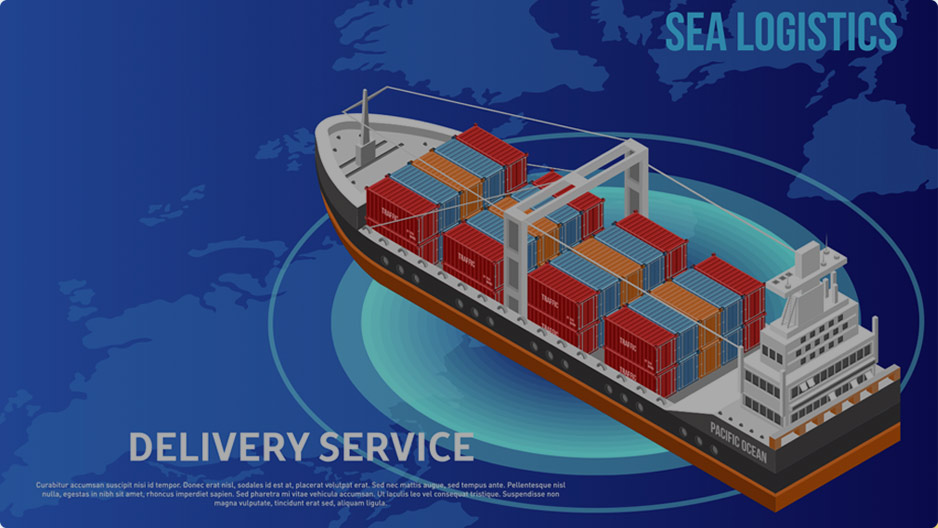How can one not understand containers when doing foreign trade? Super comprehensive knowledge summary!
1. What do large cabinets, small cabinets, and double backs refer to?
(1) A large container usually refers to a 40 foot container, typically 40GP and 40HQ. 45 foot containers are generally considered as special containers.
(2) A small cabinet usually refers to a 20 foot container, usually referring to a 20GP container.
(3) Double back refers to two 20 foot small cabinets. For example, a trailer pulling two 20 foot small cabinets simultaneously; When lifting at the port, two 20 foot containers are lifted onto the ship at once.
2. What does LCL mean? What about the whole box?
(1) Less than Container Load refers to the operation of LCL (Less than Container Load) for small batches of goods with multiple shippers in a container.
(2) Full Container Load refers to a container of goods from only one shipper or manufacturer, and a larger batch of goods that can fill one or more full containers is called FCL (Full Container Load), operated according to FCL (Full Container Load).
3. What are the common specifications of containers?
(1) 40 foot high cabinet (40HC): 40 feet long, 9 feet 6 inches high; Approximately 12.192 meters in length, 2.9 meters in height, and 2.35 meters in width, it is typically loaded at around 68CBM.
(2) 40 foot common cabinet (40GP): 40 feet long, 8 feet 6 inches high; Approximately 12.192 meters long, 2.6 meters high, and 2.35 meters wide, it is usually loaded with around 58CBM.
(3) 20 foot common cabinet (20GP): 20 feet long, 8 feet 6 inches high; Approximately 6.096 meters in length, 2.6 meters in height, and 2.35 meters in width, it is typically loaded at around 28CBM.
(4) 45 foot high cabinet (45HC): 45 feet long, 9 feet 6 inches high; Approximately 13.716 meters in length, 2.9 meters in height, and 2.35 meters in width, it is typically loaded at around 75CBM.
4. What is the difference between high cabinets and regular cabinets?
A high cabinet is 1 foot higher than a regular cabinet (one foot is equivalent to 30.44cm). Whether it is a high cabinet or a regular cabinet, the length and width are the same.
5. What is the weight of the box body? Where is the heavy box?
(1) Box weight: The weight of the box itself. The self weight of 20GP is about 1.7 tons, and the self weight of 40GP is about 3.4 tons.
(2) Heavy box: refers to a box containing goods, opposite to an empty/lucky box.
6. What does an empty or lucky box refer to?
A box without cargo is called an empty box. In southern China, especially in Guangdong and Hong Kong, empty containers are usually called lucky containers because in Cantonese, empty containers and inauspicious containers have the same pronunciation, which is inauspicious. Therefore, in southern China, they are not called empty containers, but rather lucky containers. The so-called Tiji is still heavy, which means extracting empty boxes, pulling them for loading, and then returning the loaded heavy boxes.
7. What is a heavy box? Where is the heavy box?
(1) Backload container: Refers to carrying heavy containers from the on-site station to the manufacturer or logistics warehouse for unloading (generally referring to imports).
(2) Dropped container: Refers to the process of returning a heavy container to the yard after it has been loaded by the manufacturer or logistics warehouse (usually indicated at the entrance).
8. What does carrying an empty box mean? What does an empty container refer to?
(1) Carrying empty containers: refers to carrying empty containers from the on-site station to the manufacturer or logistics warehouse for loading (usually indicated).
(2) Empty container: Refers to the process of unloading goods from a manufacturer or logistics warehouse and dropping them at the station (usually referring to imports).
9. What box type does DC represent?
DC refers to dry containers, and containers such as 20GP, 40GP, and 40HQ are all dry containers.
10. What box type does OT represent?
OT, short for Open Top, refers to an open top cabinet, which is a cabinet without a top and only has a tent on top of the box.
11. What does a half open door mean?
A container with half open doors.
12. What does the bill of lading number refer to?
Usually, the freight forwarder gives you the number to carry the container, which may be the ship owner's bill of lading (MBL) number or the freight forwarder's bill of lading (HBL) number. Generally, it is necessary to retrieve empty or heavy containers based on the ship name/voyage and bill of lading number.
13. What does the container number refer to?
Refers to the container number, which is globally unique and consists of four letters and seven digits. The first three letters are the container owner (shipping or leasing company) code, the fourth letter is U, the next six digits are the serial number, and the last digit is the verification code. The container number is usually asked by the driver because the driver only knows the container number when they go to pick it up. The container number is used for customs declaration, document preparation, and warehouse receipt entry.
14. What does a lead seal refer to?
It refers to the number of the seal that locks the container tightly. The lead seal is usually provided by the shipping company and needs to be purchased at a cost of 50 yuan per seal.
15. Export goods refer to?
On site, carry empty containers to the manufacturer or logistics warehouse for loading, and then declare for export.
16. What does imported goods refer to?
After import customs clearance, the heavy boxes are carried to the manufacturer or designated place for unloading at the on-site station.
17. What does empty driving mean?
After the car arrives at the manufacturer or logistics warehouse, it cannot be loaded due to various reasons and the empty container is pulled back to the station.
18. What does inverted box refer to?
Refers to pulling boxes from one station to another, or not picking them up in order from top to bottom, but moving the boxes above and extracting the boxes pressed below. This situation is more likely to occur when specifying the container number or customs inspection.
19. What does a container yard refer to?
Usually refers to the place where boxes are stacked and managed on or near the dock, and drivers usually carry boxes to the station. Correspondingly, there is something called a station receipt, which is used to handle the transfer of containers between the station and the driver.
20. What is usually stated on the bill of lading?
The content on the bill of lading generally includes the bill of lading number, ship name and voyage, container weight, cargo description, number of pieces, gross weight, volume, number of containers, issuer and signature, etc.
21. What precautions should be taken when shipping?
Explain to the car owner whether to export or import, box type, box quantity, cargo weight, location, station, and whether or not to reach an agreement, arrival time at the manufacturer, and special requirements for the box.
22. What issues should be noted when writing a dispatch form?
It is important to write as clearly and accurately as possible, as some drivers may not recognize English letters at all. It is important to clearly state the vessel name, voyage, bill of lading number, station, arrival time, manufacturer's address, contact phone number, special requirements for the container, and manufacturer's specific requirements. Even if there is an invoice header, it should be clearly written to prevent the driver from using the wrong header.
In addition, it is necessary to write down the issues that should be noted on it. For example, some goods have particularly strict requirements for cabinets, so it is necessary to explain them clearly to the driver to avoid incurring costs.
23. Does the equipment handover form refer to?
When exporting and picking up containers, you need to first make a receipt and then obtain a copy of the equipment handover form in multiple copies. The driver can use this equipment handover form to pick up, exit, enter, and return the container.
24. When will the containers be placed at the export container yard?
Usually it's 10 o'clock, but the place where the order is processed is usually empty by 9 o'clock, so the import work must be rushed back around 8 o'clock because the driver has to drop off the container first.
25. Overloading refers to? What about overweight?
(1) Overloading: generally refers to the tonnage of goods loaded on the vehicle exceeding the vehicle's weight limit;
(2) Overweight: generally refers to the weight of the cargo loaded exceeding the weight limit of the container.
26. What does packing and unboxing refer to?
(1) Loading is carrying an empty box to load goods.
(2) Unloading is carrying heavy containers to the manufacturer for unloading.
27. What does it mean to go back and forth again?
It refers to pulling the goods back and forth, without returning or driving empty.
28. What does the weight recording fee refer to?
The "weight charging" at highway toll gates refers to charging tolls based on the weight and tonnage of the vehicle.
29. What does the container damage fee refer to?
The cost incurred when the imported box is found to be damaged after unloading.
30. What does the washing fee refer to?
Refers to the discovery of unclean boxes resulting in container cleaning fees.










